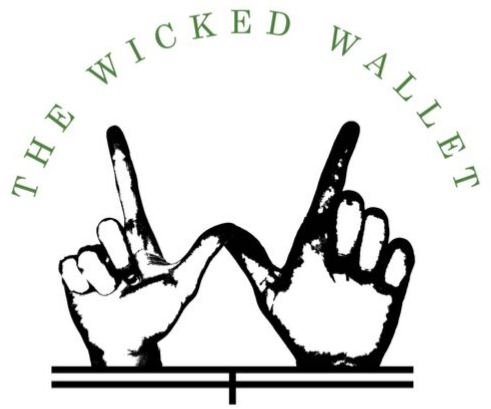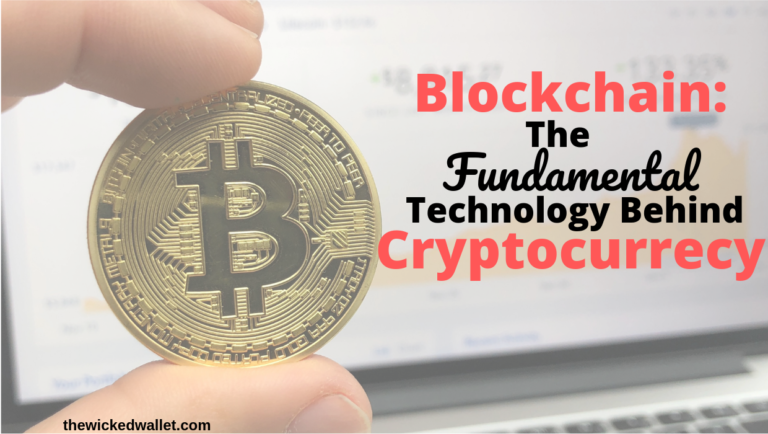Brief Introduction:
I am pleased to share with you an awesome guest post from our close friend Steve. Over the past 4 years Steve has studied cryptocurrency and has been following the ups and downs of the market. If anyone knows about blockchain and cryptocurrency it’s Steve. I hope you enjoy reading this and walk away with a better understanding for blockchain and the fundamentals behind cryptocurrency. If the words blockchain and cryptocurrency sound completely foreign to you, don’t worry you’re not alone.
The Crypto Craze
As you might have heard within the past year or so, Bitcoin, a proclaimed digital currency, made headlines across the globe as it soared from an initial value of around $1000 in January of 2017 to a peak of $18,000 by the end of the year. This generated a massive amount of interest in the digital coin and saw investors, analysts, and companies alike scrambling to get a piece of the pie. While interest due to the price action seemed to have fizzled out in the later half of 2018, the technology behind Bitcoin remains. This article will hope to address some of the history behind the technology and provide you with a greater understanding of how Bitcoin works and some of the reasons why people might find it attractive.
Blockchain Background
Blockchain technology, and similarly Bitcoin, had its framework envisioned by a man named Wei Dai. Dai created a virtual currency titled “b-money” and his idea was to create an
untraceable network in which senders and receivers would be able to send money between each other. Sound familiar to Bitcoin yet? Dai also wanted transactions to be anonymous and
users would verify transactions by maintaining separate databases which verified ownership of money. While “b-money” was never created, another individual by the name of Nick Szabo came along and created a decentralized cryptocurrency called “Bit Gold”. This new cryptocurrency introduced what we now know as blockchain technology.
Blockchain technology is the underlying technology behind most cryptocurrencies and is essentially a decentralized public-ledger with immutable transactions. There is no central certifying authority; instead, users connect to each other across a peer-to-peer network and verify transactions. Each user has full access to the ledger. Therefore, once a transaction takes place and the users have verified it, it becomes part of the ledger, unable to be modified.
Blockchain Explained
In order to better demonstrate how the blockchain works, let us assume that Jake wants to conduct a transaction with Steve. First, Jake will need Steve’s public key. This key is a string of numbers and letters that is usually different for each transaction. Once Jake knows Steve’s public key, he can then conduct the transaction by authorizing it with his private key. A private
key is similar to a public key but, it is known only to the user and is needed to allow the release of money. Once Jake has signed the transaction, a public key is generated for Jake and the transfer between the two parties is added to a “block”. This “block” contains all of the transactions currently waiting for verification by the users of the network. Users, also called miners, work to solve cryptographic puzzles using processing power which, in effect, verifies the transactions taking place on the network. Miners are incentivized by receiving rewards, often times some cryptocurrency, upon verification of the transactions on the “block”. The verified “block” is then added to the blockchain and distributed across the network updating everyone’s ledger.
The blockchain can be visualized by thinking about a Lego. Each Lego must stack on one another in order to create a tower. Without the blocks at the base of the tower, you would have no way of placing the blocks at the top of the tower. The same can be said about the blockchain. Each new “block” takes the transaction history from the previous “block” and builds on it. So “block” 51 has the information contained in “block” 50 and “block” 50 has the information contained in “block” 49. This continues all the way down the chain, hence the term “blockchain”.
This feature makes transactions nearly immutable, as double-spending becomes nearly impossible. For example, let us say that you want to edit a transaction in “block” 24 and the
blockchain is currently on “block” 50. You would be first required to edit the transactional data in “block” 24 and then you would have to resolve all of the subsequent “blocks” in the chain with the updated transaction. During this process, the blockchain is still progressing with new “blocks” being continually added to the chain.
Satoshi Nakamoto, the creator of Bitcoin, outlines this in his white paper and equates this to a Gambler’s Ruin problem. Nakamoto explains that it only takes 5 “blocks” before the probability of reversing a transaction becomes 1%, if the probability of the one who wants to change the “block” has a 10% chance of success. This built-in function has allowed for cryptocurrencies to become “trustless”. There is no need to trust the other party because transactions between parties are nearly immutable. This feature has in turn created an opportunity for the rise of illegal transactions and is popular among hackers, money launderers, and drug traffickers. A recent example at the time of this article being published is Florida City paying ransomware hackers $600,000 in Bitcoin in order to recover from an attack.
Benefits of Blockchain
Outside of the illegal activities and shroud of anonymous transactions, financial institutions have recognized the power of blockchain technology and have begun to develop their own frameworks and systems. Some of the promoted benefits of blockchain technology being: faster transaction times, more efficient and accurate transaction logs, an easily identifiable audit trail, an easily accessible database for transactional history, and lastly a technology that would allow for transactions to take place around the clock as compared to the normal hours faced by institutions today.
Blockchain technology also has uses beyond financial institutions, an example being voting. Voters would be able to vote, at which point their vote could be verified and become immutable on the blockchain. This could potentially reduce voter fraud and allow individuals to vote outside of polling areas as their vote would be verified and identifiable. Another example of a possible use case is real estate. If a property were to be put on a public ledger, the rights of the property and ownership could be verified by accessing the blockchain.
Transactions of ownership would occur on the blockchain and property disputes would become less common. In addition to this, blockchain technology can be expanded to healthcare, contracts, pharmaceuticals, licensing, transportation, and many other industries. At the moment there are very few, if none, working cases, but expect to see this technology continue to expand in scope and potentially take over operations in the future.
Closing Remarks
I just wanted to quickly thank Steve one last time, if you want to get in touch with Steve send us a message here. If you have any questions please hit us up in the comment section below, and as always feel free to share 🙂
The following sources were used in the creation of this post:
- Dai, W. (1998). b-money. Retrieved from weidai.com: http://www.weidai.com/bmoney.txt
- Deloitte. (2016). Blockchain Enigma. Parado. Opportunity. Retrieved from Brave New Coin: http://bravenewcoin.com/assets/Industry-Reports-2016/Deloitte-Blockchain-EnigmaParadox-Opportunity.pdf
- Hassell, J. (2016, April 14). What is blockchain and how does it work? Retrieved from CIO: http://www.cio.com/article/3055847/security/what-is-blockchain-and-how-does-itwork.html
- Nakamoto, S. (2008). Bitcoin: A Peer-to-Peer Electronic Cash System. Retrieved frombitcoin.org: https://bitcoin.org/bitcoin.pdf



